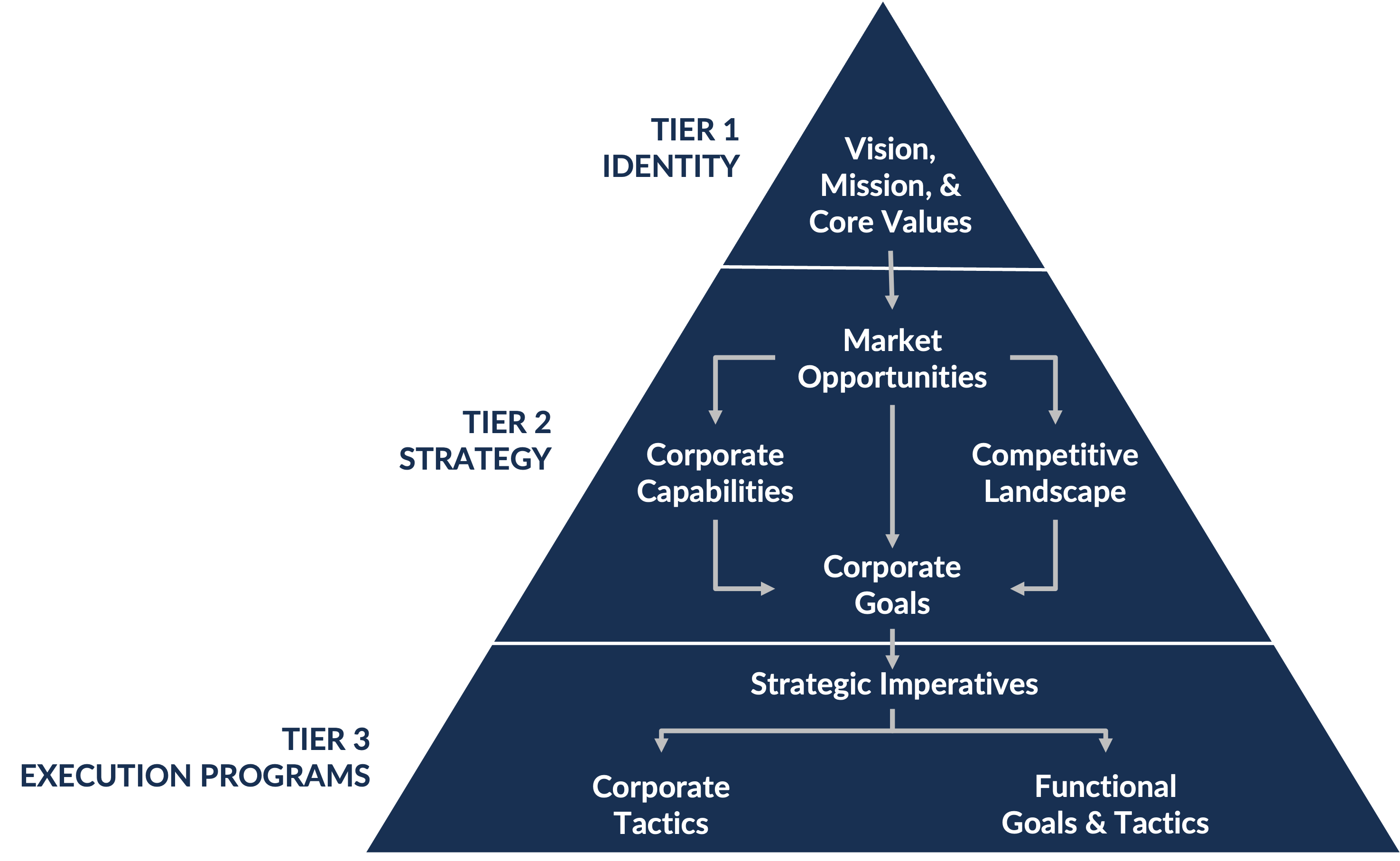When I meet with leaders of growth-stage life sciences companies, I always like to pose a simple question: “How are you going to get this to patients?” (or providers, clients, etc.). The response is often a bit of awkward silence, filled by reassertion of the complex science behind the innovation. This common exchange underscores the fundamental challenge facing the next generation of breakthrough life science companies, which is often left unanswered until it’s too late: what’s the business strategy that will bring your breakthrough to the world? As of Summer 2023, Fast Company reports that nearly 30% of VC or private equity-backed ventures that filed for bankruptcy were in the life sciences sector. While there are numerous reasons why new and growing ventures fail, our experience at CREO reveals a clear correlation to success: the integration of groundbreaking research and/or innovative technology with the meticulous orchestration of growth-oriented business strategy.
The Challenge: Innovation as the Sole Focus
An innovative idea is rarely enough to change the world. Innovation, whether it’s technological, biological, service-oriented, or a combination, can only take a venture so far. Brilliant founders with cutting-edge ideas and technological breakthroughs may find success in proof of concept and securing investment. This is a fantastic achievement and necessary to further science, but with investment comes the pressure to perform and impact society much faster than ever anticipated. As a result, leadership focus shifts from being “on the business,” the work of leaders and innovators, to being “in the business,” dealing with day-to-day operations and the occasional unexpected challenges.
Over time, the path to success becomes less clear. The company’s vision takes a backseat, and the mission becomes “fuzzy.” Competition takes notice, sales may slow and the realities of running a business set in. Life sciences is hardly a solitary field, with diverse stakeholders also increasing the pressure:
- Investors feel the need to be more hands-on
- External stakeholders question if their initial faith in the venture will pay off
- Team members wonder about the future and whether their choice was the right one
- Changes may occur in the regulatory landscape and/or unforeseen scientific advancements may come to market (see: ChatGPT’s overnight disruption across almost all fields)
In simple terms, this is often the make-or-break moment for companies aiming to change the world for the better. They must find a way to quickly become laser-focused on the most important efforts to bring their innovation to the world.
Building a Foundation to Make a Positive Impact
Like a house, a strong foundation is crucial for the lasting success of a life science business, enabling it to make a positive impact on the world. At CREO, our decades of experience in launching, leading and growing life science companies, combined with our collaboration with the globe’s most innovative companies, have led us to examine three foundational questions:
- What is the ultimate aspiration of the company? We often find that the vision, mission, and core values of a company are undervalued elements of a strong foundation. When embraced by the senior leadership team, these components become the guiding force for the entire organization. Without their presence and buy-in from the top, innovation becomes merely a line item in the annual budget.
- What is the core of the strategy? In other words, what will the company strive to be the absolute best in the world at and how will this bring their innovations to life? Understanding this at the leadership level drives winning strategies in the market. It establishes true differentiation, positions the company and its innovations accordingly, and provides the focused momentum needed to challenge established players and disrupt the industry for the better.
- Where is it vital that the company focus its efforts? We work with companies to transition from trying to tackle everything to focus on the fewest, most vital activities that drive their business forward. This is complemented by establishing fundamental business rhythms and accountabilities to ensure teams operate at their best.
A Model for Life Science Disruptors
At CREO, we have developed a proprietary methodology through our close collaboration with cutting-edge life science companies. Our Identity, Strategy, Execution Plan (ISEP) methodology brings together these elements in a concise and straightforward approach (see Figure 1).

Figure 1. CREO’s Identity, Strategy, and Execution Plan (ISEP) Methodology.
The process begins by establishing clarity in the company’s vision, mission, and core values. While some leadership teams may question the significance of this step, we have found that without these elements in place and embraced by leaders, the path to success and positive impact becomes even more challenging.
Once alignment is achieved, we work together to develop a clear roadmap for the company’s future, supported by short- and long-term goals, to establish the trajectory through which the company will create meaningful change in the world. Finally, we identify the fewest, most vital aspects where the organization must focus its efforts. This is a critical area and one where we invest significant time, as brilliant strategies, like the breakthrough innovations our clients develop, are of little value if they cannot reach the patients, providers, and other stakeholders who need them. Execution serves as the bridge from the proverbial ‘bench’ to the real world.
Real Results, Real Impact
The outcomes of our methodology are simple yet powerful:
- Clarity + Alignment: Leadership teams can cut through the noise and focus on ensuring their business effectively brings their innovations to scale.
- A Renewed Energy: The journey from breakthrough idea to world-impacting results is challenging. However, we have observed that renewed focus and clarity bring renewed energy, drive, and determination. It can reinvigorate or turbocharge company culture. As the adage goes, “Culture eats strategy for breakfast.”
- The Fewest Things: When the most vital activities for a business’s success are clear, the challenges of growing a company become more manageable. This is not to say that things become easy, but rather that the collective strength of an organization can be directed toward specific tasks or overcoming specific problems, becoming a competitive advantage at any stage of a business’s lifecycle.
After implementing our methodology, the CEO of a fast-growing Contract Research Organization exclaimed, “This is not a nice-to-have; this is a must-have!” We couldn’t agree more. What’s your vision for how your company will create a better, healthier world?
 Noah Rosenberg | December 5, 2023
Noah Rosenberg | December 5, 2023


